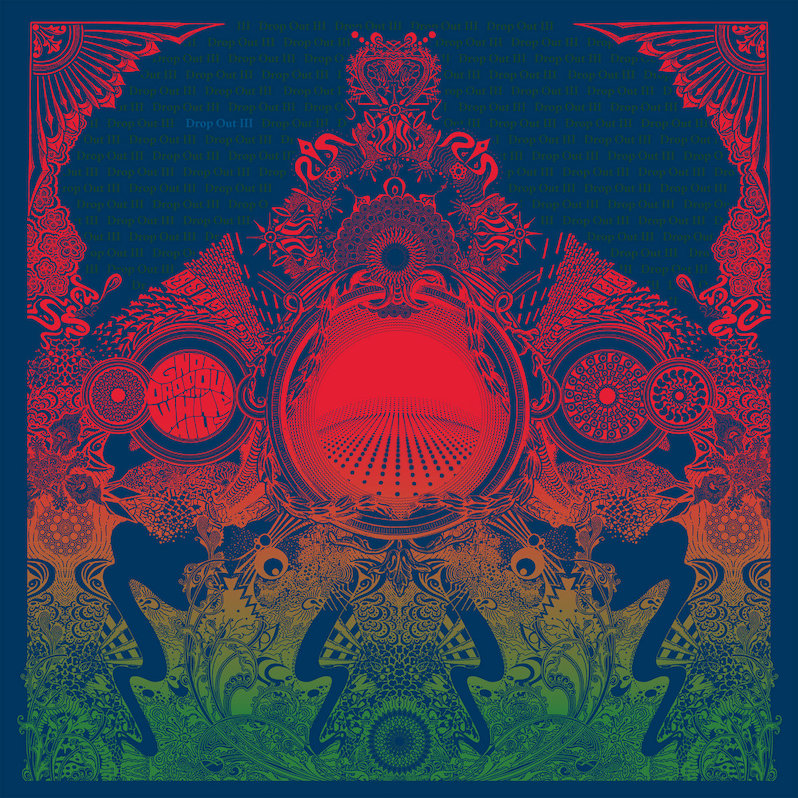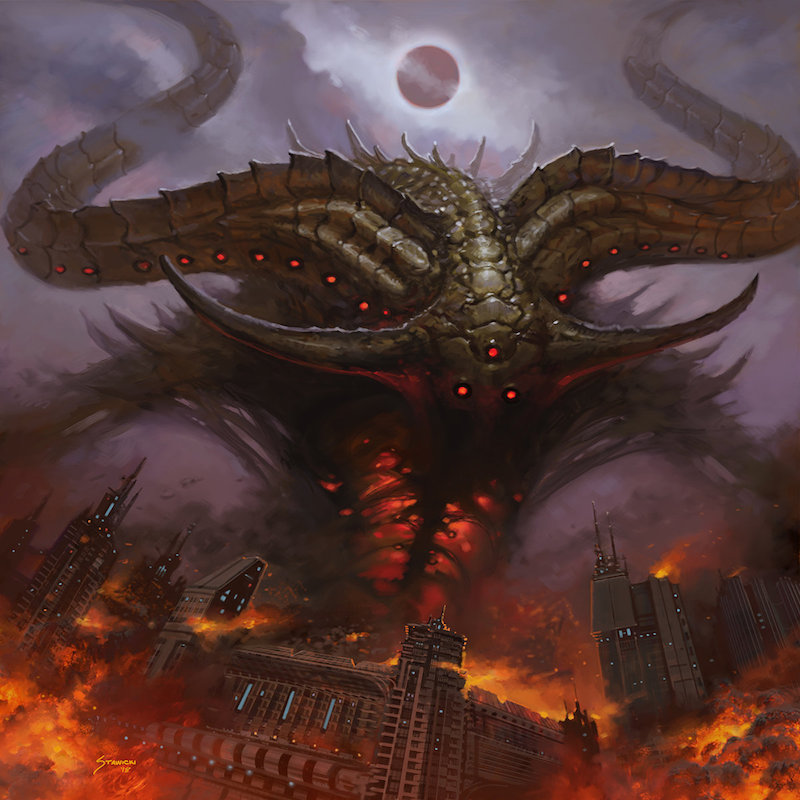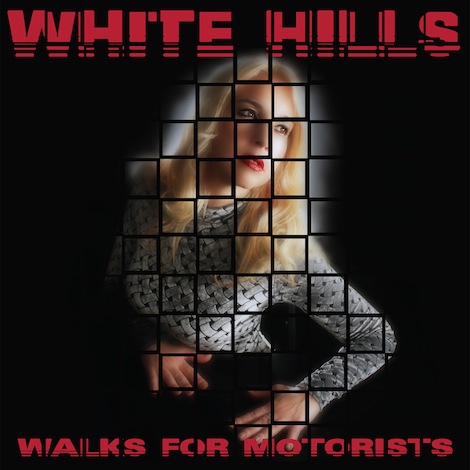GNOD & White Hills : Drop Out III

Since 2006, GNOD have developed a reputation as one of the UK’s most innovative and prolific psychedelic noise rock bands, as well as becoming my favorite British live band. I initially discovered them on a triple-headline bill with genre brethren Part Chimp and Hey Colossus at the Tufnell Park Dome in 2019, and the Salfordians put on a show that made me think to myself, “Holy fuck, what in the hell is this?!” They put on a show that blended the expansive qualities of a space rock band like Loop with the thick, solid riffing of a sludge metal band like the Melvins, but played with a volume and intensity that far exceeded both. Over the next year or so, I set about devouring their back catalogue, which alternates between noisy, abrasive records like Just Say No to the Psycho Right-Wing Capitalist Fascist Industrial Death Machine (2017) and La Mort Du Sens (2021), and offerings such as Infinity Machines (2015), on which they deployed electronic instrumentation to create a trance-like effect. Meanwhile, New York City psych duo White Hills have been around since 2003, taking a similarly spacey and experimental approach to songwriting and performance to GNOD’s. The two bands previously recorded GNOD Drop Out With White Hills (2009) and GNOD Drop Out With White Hills II (2010) together at Camberwell’s Dropout Studio. For the third part in this series of collaborative recordings, arriving more than a decade later, they offer Drop Out III, a series of new, expanded, previously unreleased versions of songs from the recording sessions that birthed the prior two records.
The opening title track has a rhythm to it that is pleasant, if repetitive, before the driving lead guitar that kicks in and blows the piece wide open. One curious aspect of the song is that, despite the bands proclaiming this to be an “expanded,” “director’s cut” version of it, it is actually two minutes shorter than the original. “Run-a-Round” continues in much the same vein, pace-wise, and feels slightly less synth-driven than its 2010 rendition. The softer “Wellhang” is rather eerie and introspective in tone, but I found the slow, steady, rolling drumbeat, treble-led guitars, and cacophonous, mocking laughter of “Spaced Man” considerably more enjoyable. That being said, in a similar way to the title track, it is only ten minutes long, as opposed to the 2010 rendition’s 14. Not only is it less “expanded” in terms of length, it feels less expansive musically; while the original featured an abundance of laser-like synth sounds shooting out of the speakers, these sonic aspects of the song have been greatly dialed back in this version, making it sound, if anything, tightened rather than expanded.
“Elka,” which begins side two, introduces what sounds like sitars to its instrumentation and is an extended, 19-minute rendition of a 16-minute bonus track from GNOD Drop Out…II. Not only is it noticeably longer, its production values make it sound more vivid and fully realized, the bongos and sitars being much higher up in the mix this time. The previously unreleased “Undressing Time,” however, merely consists of a few insubstantial synth noises. “Air Streams” is equally lightweight, although interestingly, it comprises the masters of “Air” from GNOD Drop Out… and those of “Streams” from GNOD Drop Out…II being played together, which was the bands’ original plan for the song. The 13-minute, previously unreleased “Unify” closes the album, sounding oddly like A Northern Soul-era Verve with the Osees’ John Dwyer on guitar for much of its 13-plus-minute duration. Though it does drag on a bit, it is a mostly enjoyable way of finishing the album, building slowly up to a climax that it then gently and gradually deconstructs through use of a flute playing over the increasingly gentle drums until both bands’ playing finally peters out.
Drop Out III is an enjoyable enough set of recordings. The majority of its songs are decently listenable, and it is clear that both GNOD and White Hills’ creative thinking was in alignment when it was recorded. However, the songs also mostly do not greatly improve or musically build upon the versions of them already available, making the record feel somewhat superfluous as a release. Its 71-minute (146 minutes if you include bonus tracks) running time can at times test the listener’s patience, and taking a breather between songs is recommended. Completists of either band will find a lot of material to enjoy here, but newcomers could well find the album inaccessible, unwieldy, and alienating.
Label: Thrill Jockey
Year: 2025
Similar Albums:




